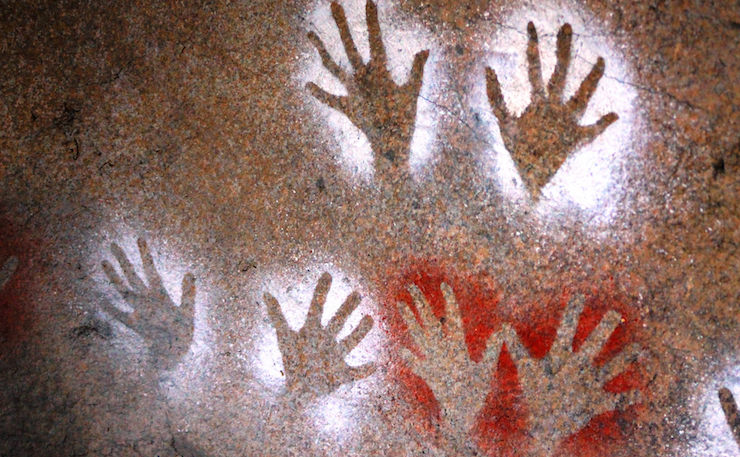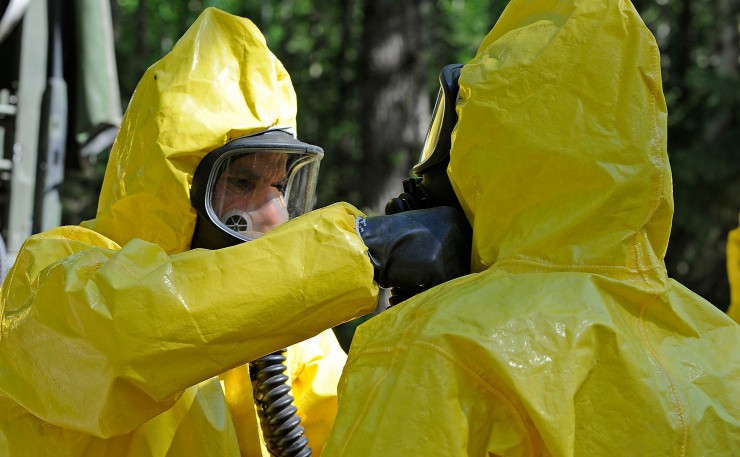Adnyamathanha Elders are “shattered” that of the six sites shortlisted by the Federal Government for a national nuclear waste dump, the one on Wallerberdina Station in the Barndioota region of South Australia, is now the only one pegged for further assessment.
One Adnyamathanha woman Regina McKenzie, who is a direct neighbour to the nominated site, said the community is devastated, “like somebody had rang us up and told us somebody had passed away”. The Australian Conservation Foundation, too, are calling the proposal “disturbingly familiar to past failed federal approaches.”
The nominated site, leased as a pastoral property from the South Australian Government by ex-Liberal Senator Greg Chapman, is located next door to Yappala Station, which was declared an Indigenous Protected Area by the Federal Government in 2014.
There are many thousands of Aboriginal artefacts registered in the area, including an ancient Aboriginal skull fragment. The Adnyamathanha people have been meticulously mapping and registering the storylines and sites. The landscape is stunning, with Hookina Creek on the property framed by the iconic Flinders Ranges. Wilpena Pound is around 30 kilometres away.
Minister Josh Frydenberg had accepted six site nominations out of the 28 that were originally put forward. Communities in each of the six areas – Barndioota included – formed action groups and began a process of building local awareness and conveying opposition to the government during a 120 day ‘consultation’ period prior to the Minister’s recent decision.
There was also an unprecedented display of solidarity between the affected communities, with social media discussions evolving into a joint lobbying trip to Canberra in early March 2016. When the shortlist was announced on Friday April 29, representatives from all of the groups released a joint statement reiterating support for their friends and colleagues at the named site.
Touring the low level radioactive waste storage facilities at @ANSTO with @craigkellymp and John Cobb MP pic.twitter.com/WKc6ACd3xP
— Josh Frydenberg (@JoshFrydenberg) December 11, 2015
Buried in Minister Frydenberg’s media release was a comment that “the government remains open to considering new expressions of interest for additional facility sites or locations”. With the dust and initial shock still settling for the South Australian mob, this sentence begins to stand out from the rest of the text.
If the government was so confident about achieving the ‘broad level of community support’ needed to progress discussions in the Barndioota region and obtain consent for any future waste facility, why would they be entertaining the acceptance of other nominations?
Communities shocked to find they were on the earlier list of six shortlisted sites were given 120 days to hear from Department representatives and discuss the proposals – and to build their local campaigns.
Parallel to this, an Independent Advisory Panel was meeting to compare and analyse the sites according to their ‘Multi-Site Criteria Analysis’. Any further nominations would surely need to be subject to at least the same level of discussion and scrutiny for this to be considered a fair process.
So has the nomination process recommenced? Will it be advertised again in the national papers, or is the government relying on people to take initiative and study the project website page calling for nominations even though the (very short) shortlist of one possible site has been announced?
How long will nominations remain open and how will communities find out that a site in their region might have been nominated?
And what does this mean for Adnyamathanha Traditional Owners and local residents who are on a knife-edge coming into this ‘Phase 2’ of the consultation process? How long will this process now drag on for them as the ‘preferred so far but maybe we can find something better’ location?

The mental health impacts for communities in nominated areas cannot be downplayed.
Residents in the Kimba region of South Australia spoke openly about how the nomination process had damaged and divided the community. Traditional Owners of Muckaty in the Northern Territory, whose spirited and sustained resistance defeated a long standing earlier federal dump plan in 2014, have constantly spoken of how stressful it was having the government target their land.
Young Warramungu and Warlmanpa woman Kylie Sambo reflected on this experience in a recent support message to the Adnyamathanha. “I know you will be deeply hurt. We were so confused and scared. People got sick with worry, some old people even passed away during our fight. I learned so much about how tricky and cruel the government can really be,” Sambo said.
For over twenty years now, a succession of Federal Government Ministers have tried the same divisive Decide-Announce-Defend tactics, hoping to steamroll a facility onto a site considered politically vulnerable and expendable.
Each time they have been challenged and beaten by remote Aboriginal communities organising locally and in alliance with civil society organisations, including national public health groups, environment groups and trade unions.
Radioactive waste management is a social justice and environmental issue. Traditional Owners living remotely across Australia have repeatedly refused to allow their country to be used as a sacrifice zone.
Any responsible approach needs to start with a commitment to stop the production of more waste and the phase out of the nuclear reactor at Lucas Heights. We need processes that will transcend election cycles in favour of respect for country and communities, both now and long into the future.
Until then, every attempt to dump the waste ‘out of site out of mind’ on unwilling communities will be met with fierce resistance.
Donate To New Matilda
New Matilda is a small, independent media outlet. We survive through reader contributions, and never losing a lawsuit. If you got something from this article, giving something back helps us to continue speaking truth to power. Every little bit counts.





